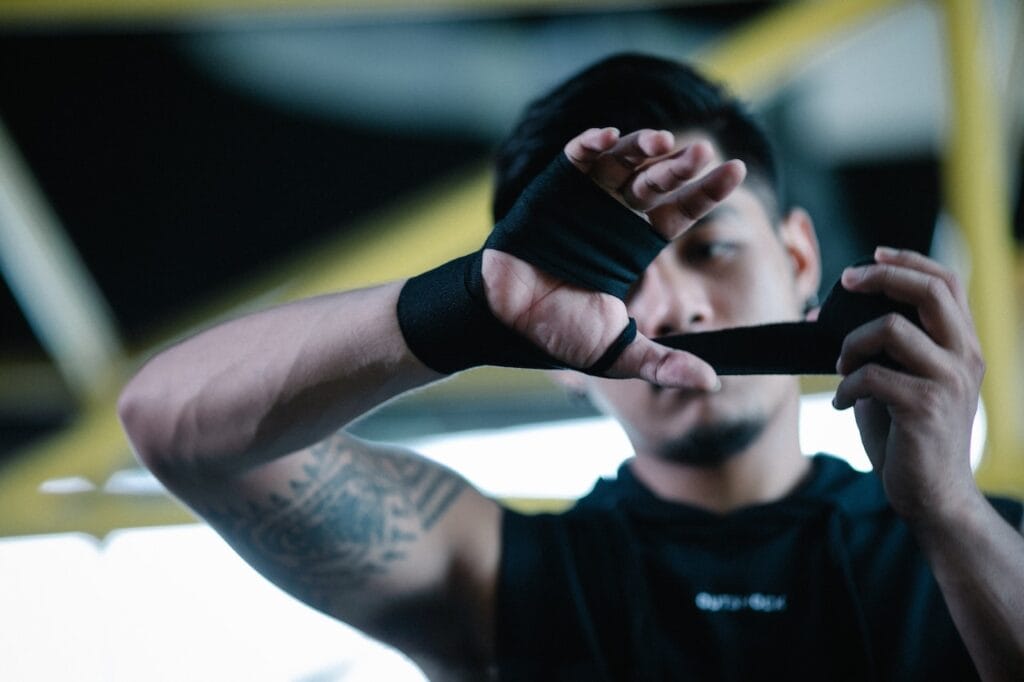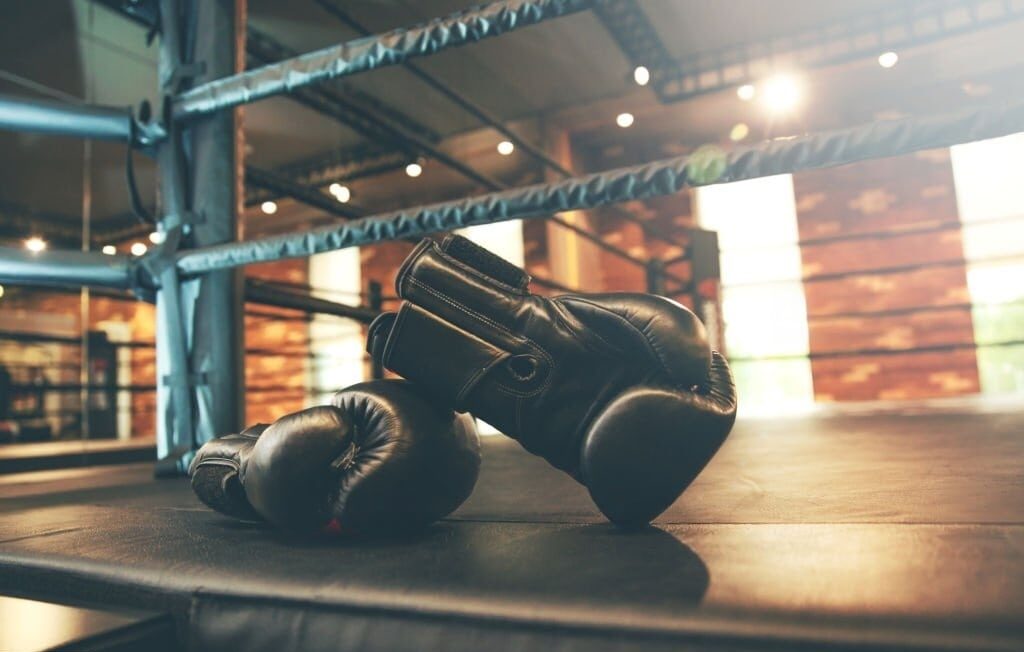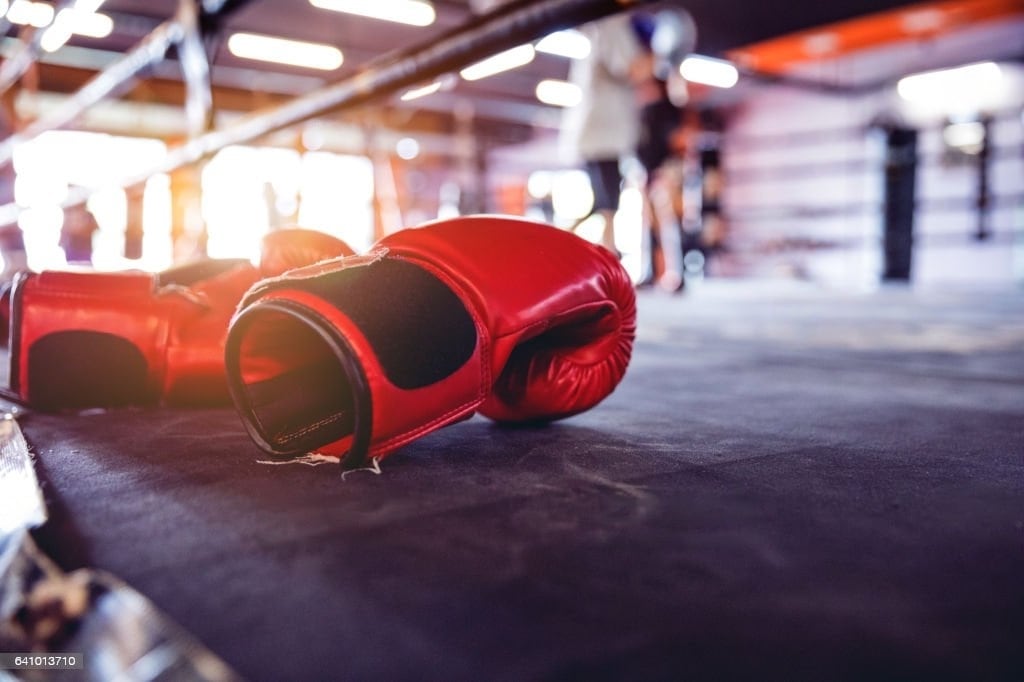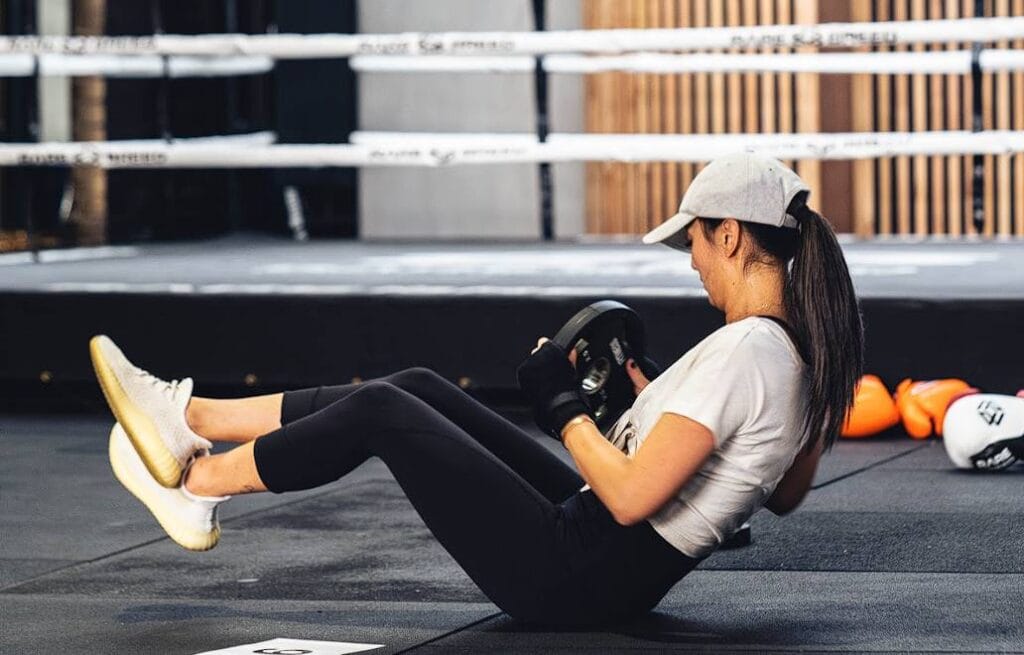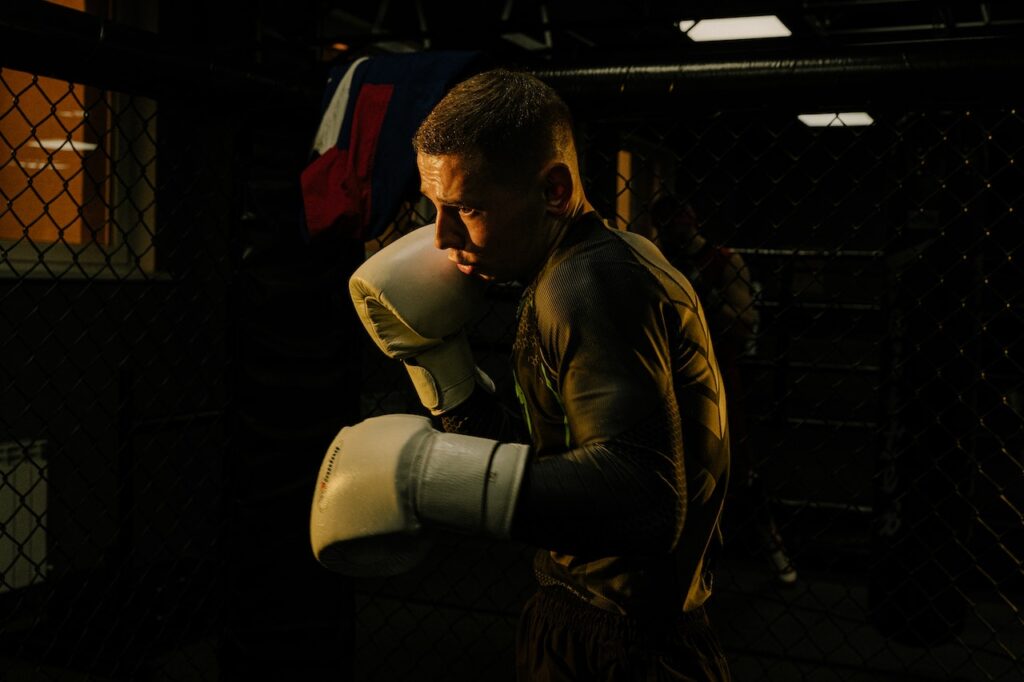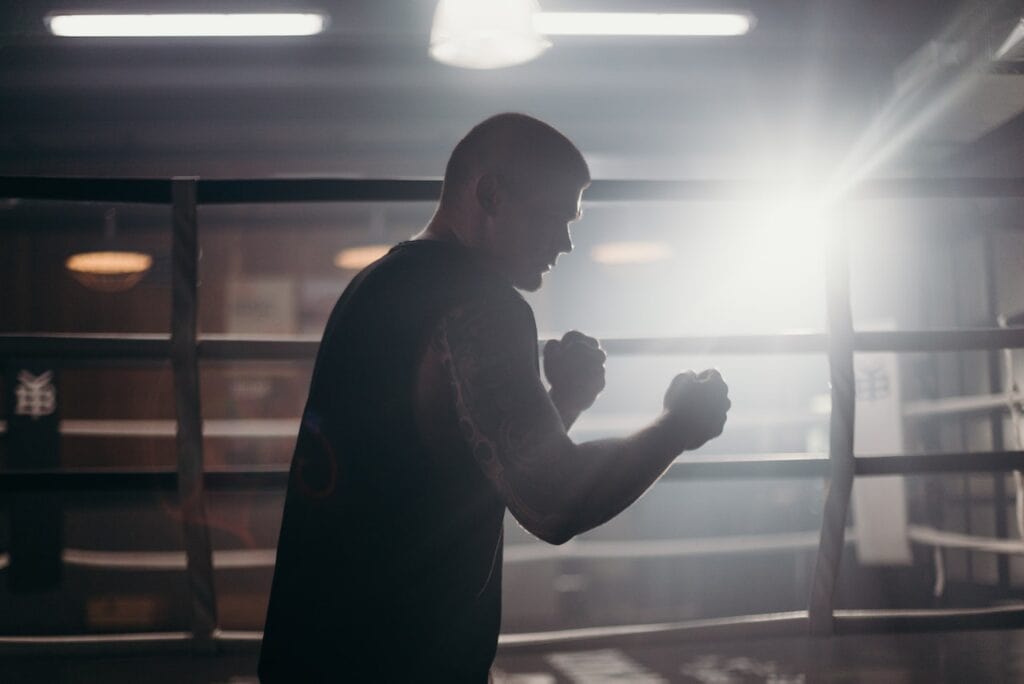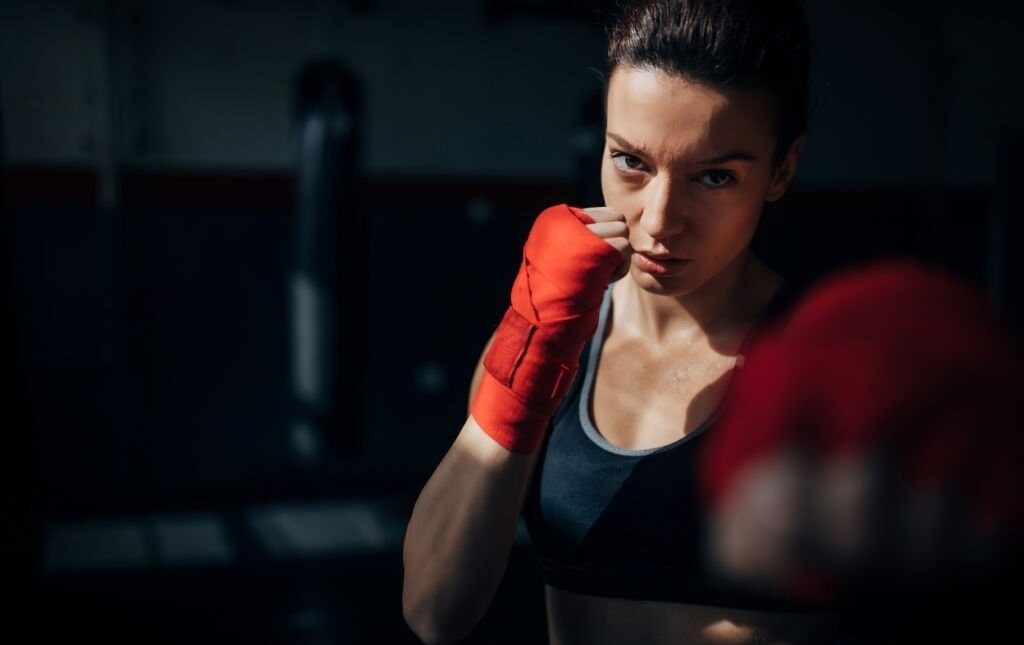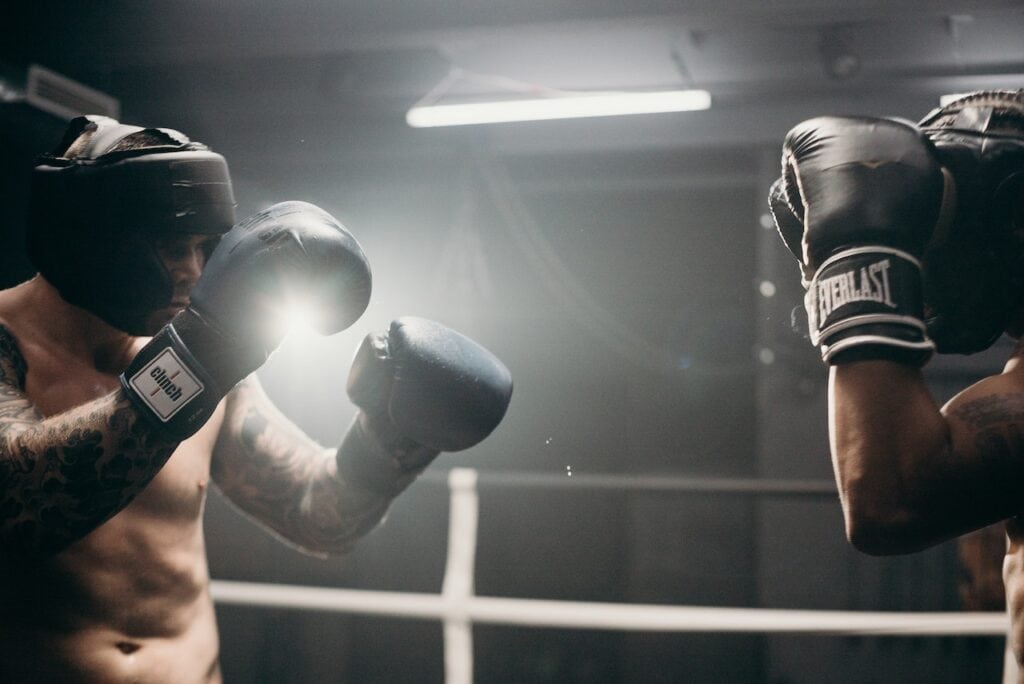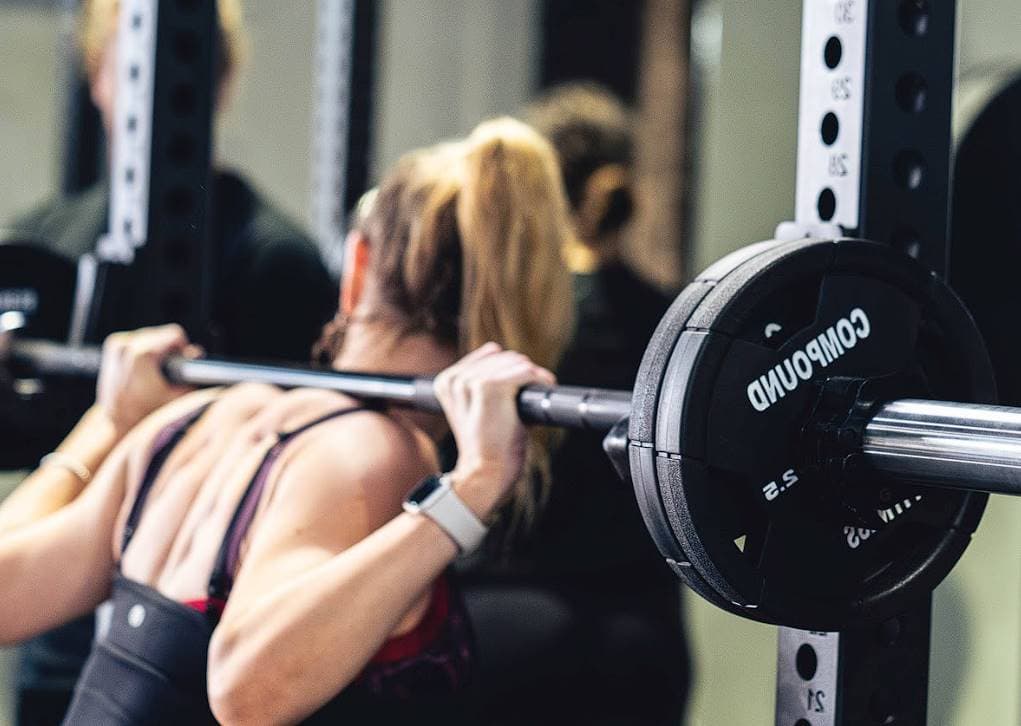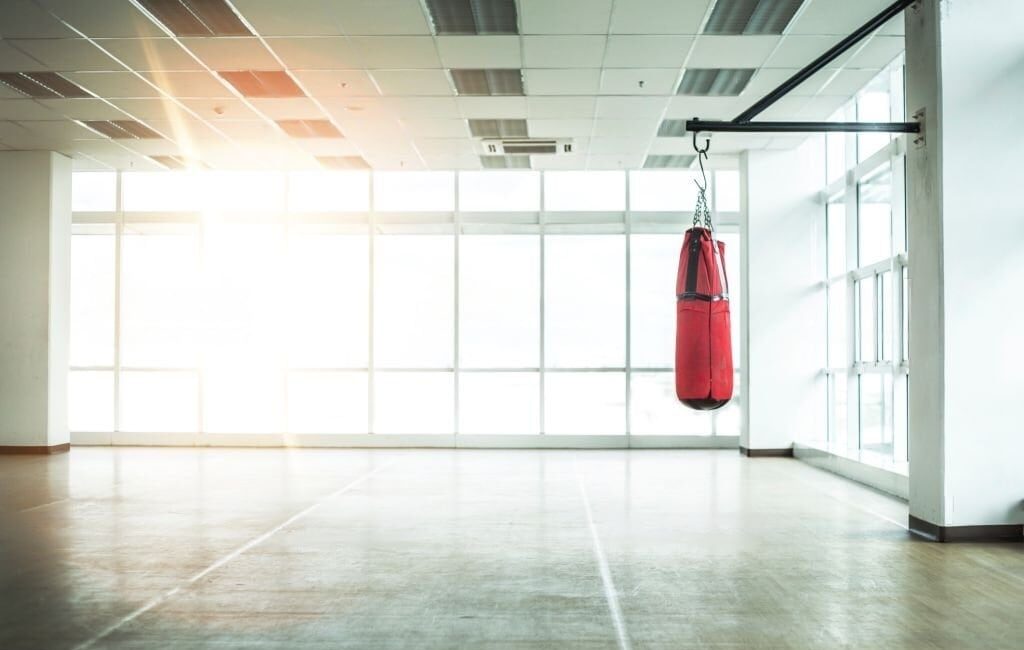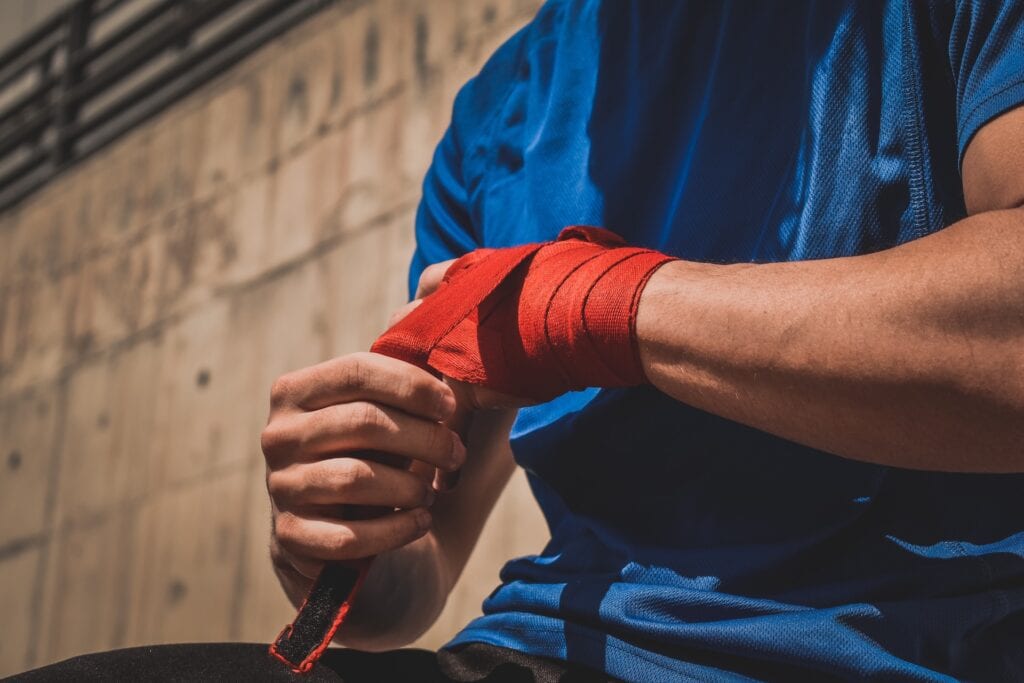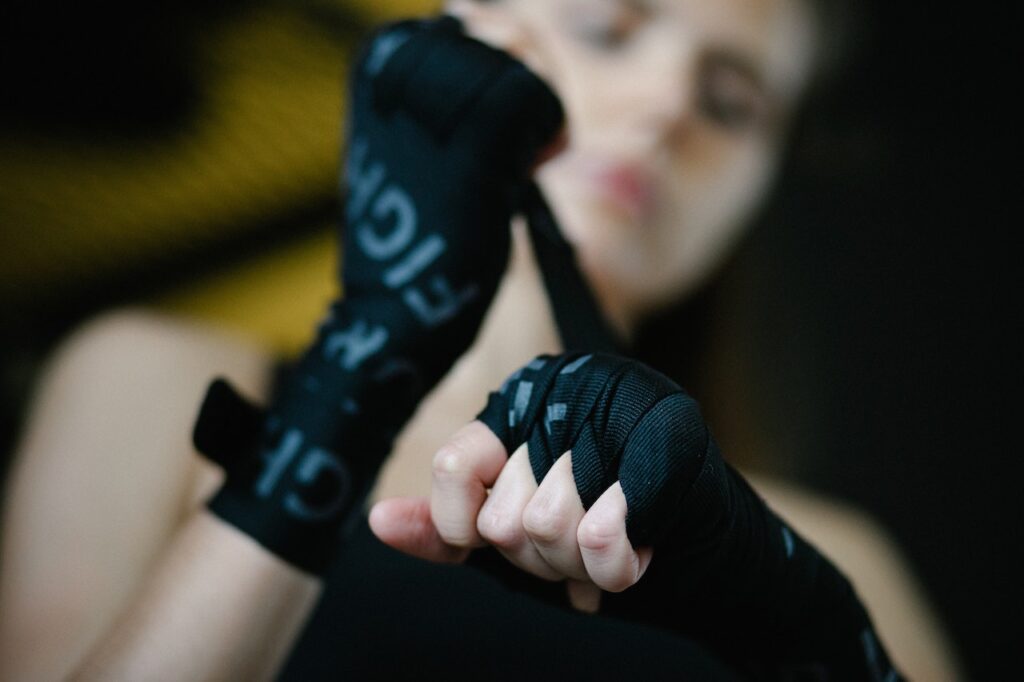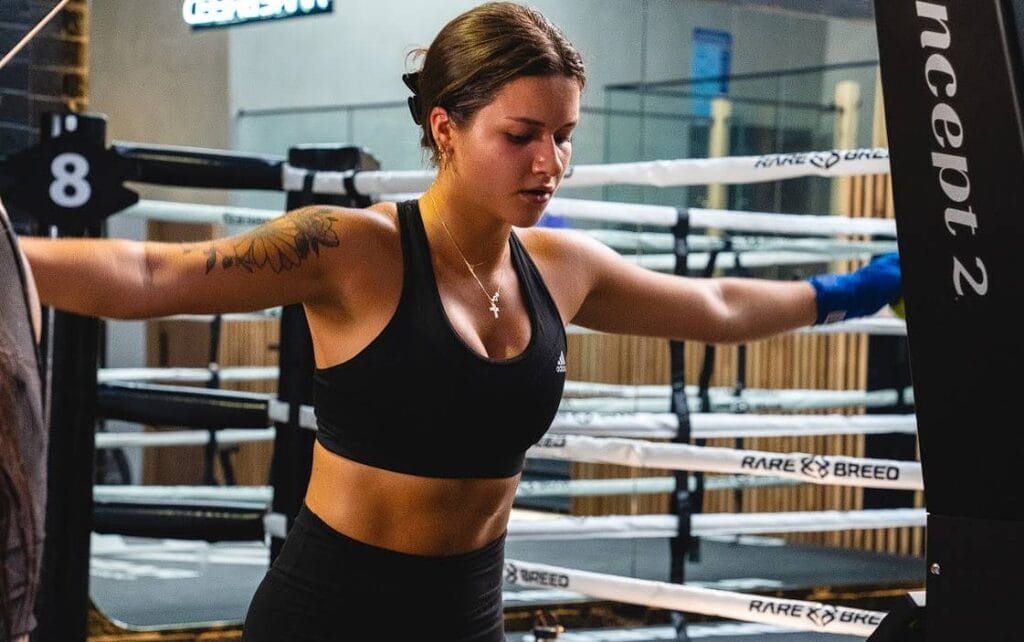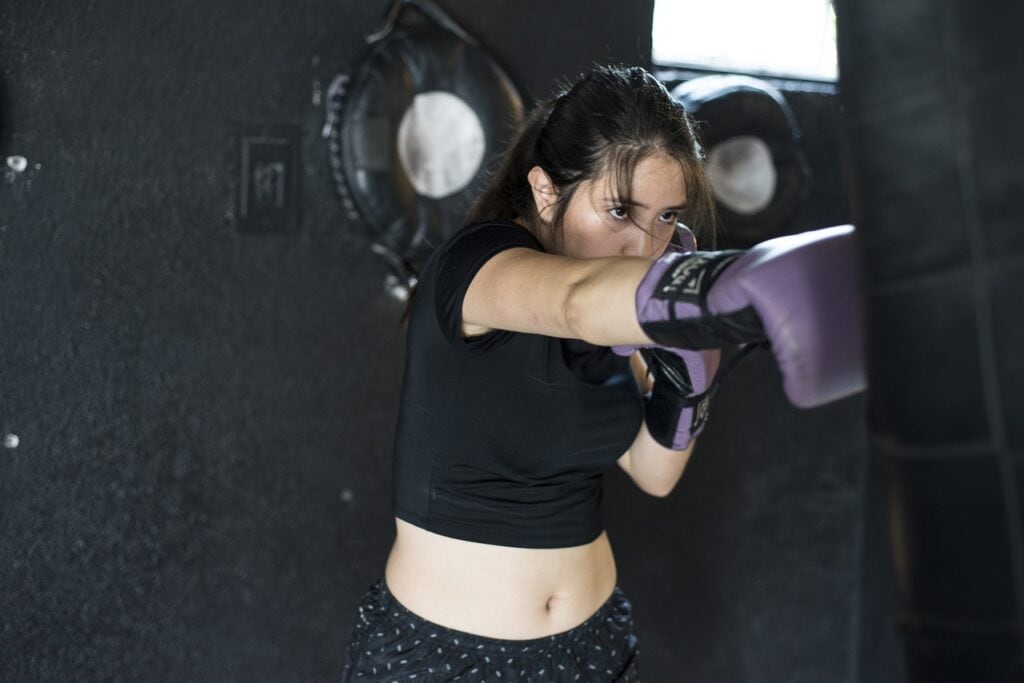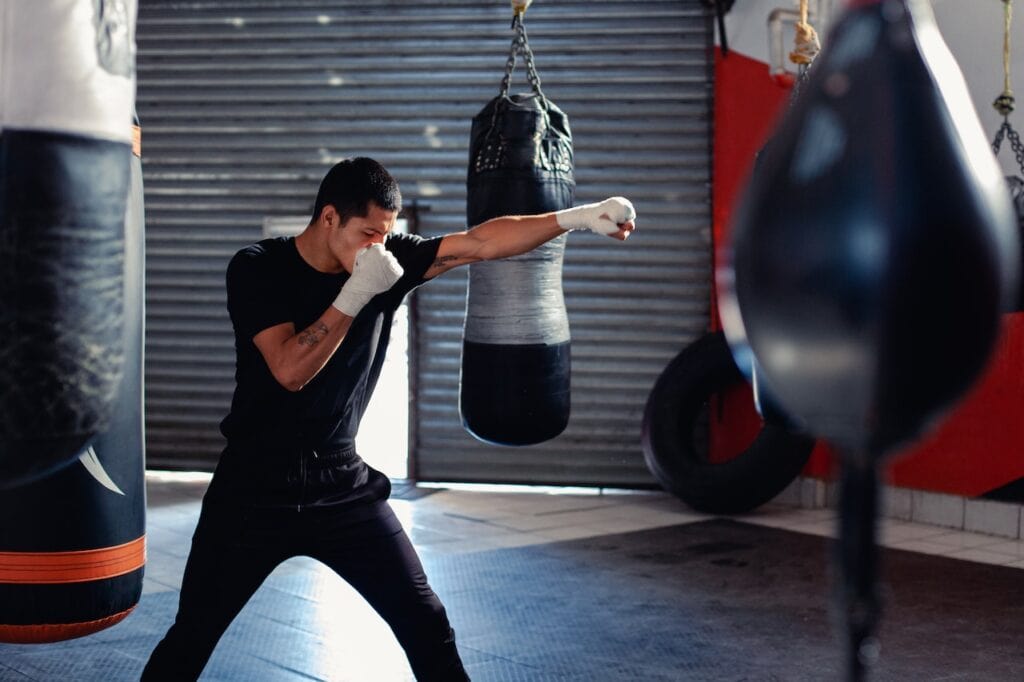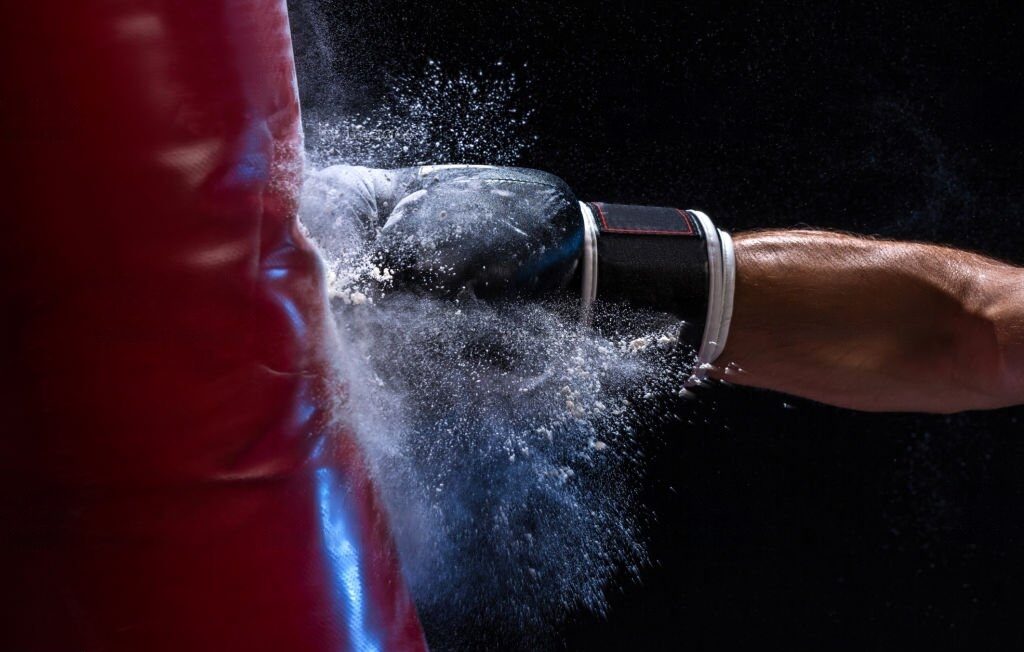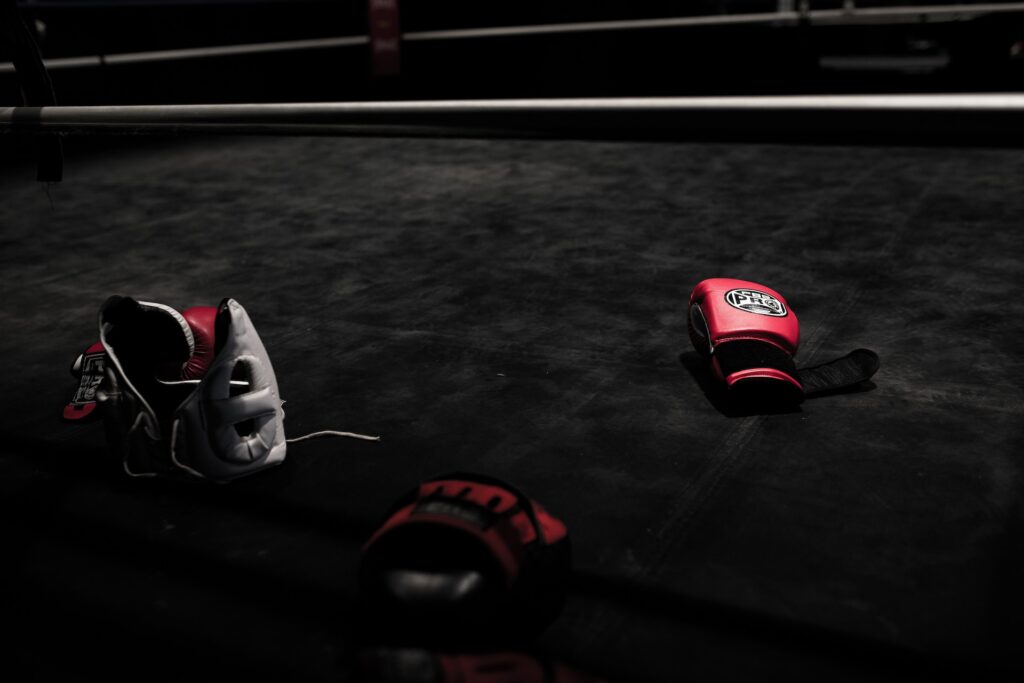Boxing is a physically demanding sport not for those who are easily discouraged. Boxing entails throwing and taking punches, with the ever-present risk that you or your opponent could be knocked out cold.
Casual spectators perceive that combat sports are inherently violent due to the nature of the competitions, which is one of the reasons why it is so exciting to see a fight live and in person. Boxing, on the other hand, is an art form and not just a straightforwardly violent sport. There is a lot more to it than that. The art of making sweets possesses an air of refined sophistication about it.
Nothing is more spectacular than witnessing a boxer line up punches in a way that makes it appear that they are doing it effortlessly, using counters and defensive moves to overwhelm their unfortunate opponent.
That is impressive, but it is a very different challenge to know the methods, put them into practice, and then successfully use what you have learned during practice in a real battle. It is a completely different kettle of fish.
Amateur Boxing for Beginners
Getting Your Amateur License
USA Boxing is in charge of managing amateur boxing in the United States. This organisation is also responsible for the sport up to the most elite levels, including our country's Olympic boxing squad. The events outside this structure are called exhibitions or "smokers" between clubs.
You will be required to submit to a physical examination, demonstrate that you are in good mental and physical health, and pay your annual dues to the Local Boxing Committee closest to you to compete in USA Boxing events (LBC). On this page, you will discover the pertinent contact information for your district.
The first order of business is to schedule an appointment for a physical examination. It is recommended that you first speak with your coach or gym managers, as they will typically be able to recommend a collaborating physician in the neighbourhood.
In addition, there are times when they have successfully negotiated reduced fees in exchange for the large number of athletes they send their way. In such situations, the doctor will typically have the legal form waiting for you at the office when you visit. If this is not the case, you must obtain a copy from the LBC or your gym.
The physical aspect is quite fundamental. Before continuing, the doctor will evaluate your heart rate, blood pressure, and reflexes. They will inquire about any head or hand injuries you have had. They do not use any form of modern screening measures, such as X-rays, brain scans, or anything else like that. You will send or bring the Amateur Boxing application, your signed form of the physical, two photographs that are passport size, and a check for $55.00 to the LBC.
It is all predicated on the assumption that your doctor will give you a clean bill of health. You should have your driver's license in a week or two. Be careful to place this item correctly since you must give it in at every USA Boxing event. Nevertheless, it will be returned to you after the results of your fight have been put into the system.
Getting Added to an Amateur Boxing Card
To your good fortune, this won't be difficult. Once your trainer determines that you are ready to compete on the amateur boxing circuit, he will be your best resource for attending and competing in tournaments. It is because the amateur boxing circuit is a tiny local and national world.
There are two primary categories: the tournament and the bout held in a local club. Tournaments are more well-known, as virtually everyone is familiar with competitions such as the Ringside National Championships and Golden Gloves. The second possibility is for a local club, company, or charitable organisation to underwrite the costs of putting on a fight card.
Tournaments, as one reasonably anticipates, last for several days, with the winner advancing in the bracket while the loser is relegated to the spectator section for the remainder of the competition. You may only need to win one fight to advance to the championship round, but that depends on the competition and the weight class that you are competing in.
If it's a smaller tournament, or if you're competing in a very light or heavyweight class, you can immediately be thrust into the championship match against the lone competitor in your category.
Regarding the audience size, venue, and location, club fights may be anything you want them to be. One significant distinction between club bouts and other types of competition is that participants are not required to belong to a particular weight category. The two combatants who are most comparable to one another in terms of weight and level of experience are often paired up against one another.
Therefore, while a novice fighter with ten or fewer fights is required to make his weight class for a tournament at, say, the 152-pound division or be forced to move up to 165, a club fight will allow a 154-pound fighter to match up against someone at 150, or 158 in the other direction.
Again, it contrasts with a tournament, where a fighter with ten or fewer fights is required to make his weight class. These are just estimates, but the pairings in a tournament are decided with a bit more precision than in a regular game.
Getting Matched and Dealing with It
You have put in a lot of work and suffered a lot of punishment, but now you are dishing out more beatings at the gym than you are taking. Nevertheless, your squad and you came to the competition armed and ready for battle, and your coach has given you the green light to engage in some rough-and-tumble competition. So what do we do now?
You will begin by taking your weight and scheduling an appointment with the physician. You will walk on the scale, and then you will need to hand over your amateur card. Your weight is recorded at a lower number after you skipped breakfast and had a relatively light meal the night before, and the doctor examines you further.
He has you follow the light on his pen with your eyes as he tests your pulse rate and blood pressure, which are most likely dangerously high owing to the stress and uncertainty of the scenario. He also has you trace his pen light with your eyes.
He will joke about how worried you are and wish you the best of luck. After everyone has gone through this, they will review the competitors and their biographies to pair them against one another as evenly as possible. Fighters in the novice class must compete against other fighters in the same class, whereas fighters in the open class who have fought ten times or more face off against other open-class competitors.
Ultimately, they devise the schedule and inform a few unfortunate (or fortunate) men that they could not identify a suitable opponent to compete against in the tournament. At this moment, the course of your life is set in stone.
It is a heads-up about the process that was described above. Nothing ever happens at the appointed hour. I have never been to a performance where the weigh-in began when it was scheduled to begin.
The doctor has never shown up on time in all the shows I've seen. I have never seen an event where the first fight began at the scheduled hour. Prepare yourself for this, as the most difficult part of the day will be spent waiting for everything. Bring the iPod with you.
The schedule will inform you of which corner you will be competing in (red or blue) and whatever number on the schedule you will be fighting. In my prayers, I always ask not to be in the top spot but not too far down the list. As I said, nothing is worse than waiting for a long time. The tight quarters you share with your opponent are another one of the little perks of amateur boxing.
As soon as you walk through the door, everyone is glancing at each other and making mental comparisons about the guys, particularly those that appear to be around the same weight as them. After the pairings have been determined, you will be aware of the opponent you will be facing. You will likely be in the same room as him when you get dressed and warm up.
After the combat that is now taking place in front of you has concluded, you will have to wait until both of your opponents have exited the ring before you can proceed to the battlefield. You are going to enter the ring from the particular corner that has been allotted to you. You will receive some last-minute instructions from your coach, and they will put some Vaseline all over your face and headpiece.
After hearing your name called out by the speaker, you should make your way to the centre of the ring, where the referee and your opponent will be waiting for you. You will shake hands with your opponent and then be motioned back to your corner after the referee has finished saying whatever he believes he needs to say.
Your anxiety and fear will be replaced with a profound and serious focus and fear in the final few seconds before the opening bell rings. Your adversary will appear to be incredibly ripped and menacing, while you, on the other hand, will look the same to him.
Now, you will be rewarded for all of the sacrifices, pain, and hard work that you put in, or you will be sharply rebuked for all of the days that you stayed in your warm bed instead of doing your roadwork and all of the times that you dug it on the heavy bag when your coach wasn't looking. In either case, entering the ring is a step that the vast majority of people cannot take, and you will never look back with regret on having taken it. I hope things go well for you.
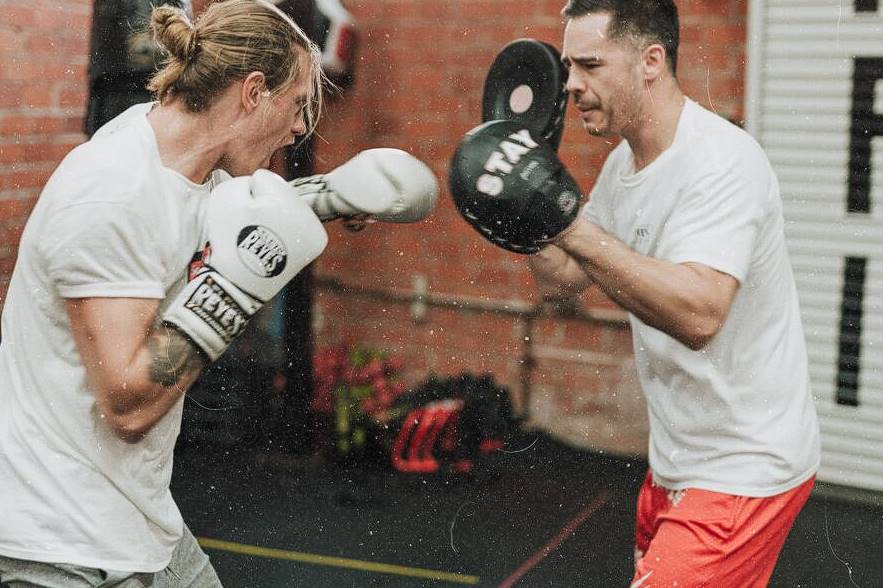
Training Tips for the Amateur Boxer
Using the Right Gear
As you train, you must utilise the appropriate equipment for your protection and to maximise the benefits you derive from your workouts. Possessing the appropriate headgear, including a gumshield, shoes, and even bags, will help you stay safe as you exercise and ensure you get the most out of your workouts.
Even though it will be a pretty expensive expenditure, having the appropriate equipment and ensuring that you do not put yourself in danger are two things that cannot be quantified in monetary terms.
Practice what you Punch.
A wide variety of punches may be thrown in boxing, including uppercuts, jabs, hooks, and crosses, and these punches are typically thrown in combos. It indicates that there is always the potential for you to sustain an injury.
If you are not punching correctly, you risk injuring your shoulders and back, cracking your knuckles and other bones in your hand and wrist, and even dislocating your fingers. It would help if you practised throwing your punches by hitting a punching bag and sparring with other people. When it comes to this, the technique is everything.
Living the Proper Lifestyle
Nutrition and exercise are two very important factors to consider. You might believe that putting in a lot of effort in the gym will take care of everything for you, but you still need to live outside the gym. It means eating the right foods, getting enough sleep, avoiding drugs, alcohol, cigarettes, and other unhealthy habits, and staying out of trouble.
Fights at bars and on the streets are included in this category. You don't need to lead the life of a monk or a priest, but you should do the right thing, keep your head down, and concentrate on your training.
Developing Your Footwork
If you don't have the proper footwork, you'll find that your boxing career doesn't last nearly as long as it could have. Not only does "footwork" refer to how you stand, but also how you move about the court. When shadowboxing in front of a mirror, it is beneficial to concentrate on your movement and monitor your footwork.
It will help you practice. Also, put this into practice while shadowboxing inside the ring. Becoming acquainted with every square inch of the canvas is to your advantage. In the boxing ring, it is essential to have feet that are both quick and stable.
The Right State of Mind
When it comes to boxing, there is nothing more vital than having the appropriate frame of mind to carry out the tasks of training and competing. Mike Tyson, one of the greatest boxers of all time, said it wonderfully that everyone has a game plan until they get struck. He was one of the greatest fighters of all time.
What course of action will you take after being struck? That's the important part. By concentrating on Tyson's frequent outbursts, you might gain insight into "what not to do" in similar situations. Strengthen your mental fortitude to help you through this.
Regarding the fundamentals involved, boxing training is quite easy to understand. However, if you want to influence the ring, you need to remember to keep your attention on the task at hand and to live your life like a boxer if you want to have a chance of succeeding there. The little things you do can make the biggest changes.
In the beginning, paying close attention to what your trainer has to say is essential to avoid developing poor habits. However, it only introduces some fundamental concepts for those just starting. Keep an eye out for upcoming posts that discuss strategies and techniques in greater depth.
8 Rules of Amateur Boxing You Didn’t Know
1. It’s not called a fight (Although I call it that sometimes.)
Only bouts that take place in a professional setting are known as fights. Amateur competitions are called bouts or matches to differentiate between professional and amateur competitions. You might overhear me say it here in my little cave, but you'll never catch me slipping while I'm in my black and white.
I may say it inadvertently, but you'll ignore what you've heard and act as if nothing has transpired. In this way, I can avoid being extremely ashamed.
2. Referees CAN talk to boxers during the match
Before 2014, referees were only allowed to use basic hand signals. During at least one or two of the matches I participated in, violations were called, and I have no recollection of having any notion of the actual infringement that had been committed. You don't think about the referee or pay attention to her most of the time during a boxing round because she tends to blend into the background.
Yet, because amateurs are learning in the ring, the new rules allow referees to say what the infractions are and even to instruct a little throughout the round. So it is because the new rules recognise that amateurs are learning. Even specific cautions, such as "Watch how you're holding" or "Keep your head up," are fine for referees to issue. In addition, referees can declare and clarify an offence.
3. Most punches don’t count (And here’s why…)
Most individuals still believe that the winner of a fight is determined by who lands the most punches or that they should win.
Amateur bouts (Hah! Notice how I didn't refer to them as "battles"? I can be very good like that sometimes) are evaluated based on the following five metrics:
- The total number of solid blows that were landed on the objective area
- Dominance throughout the fight
- Competitiveness
- Strategy and combat planning superiority
- Compliance with the regulations set forth
So, throwing punches is only ONE component of the overall image, and for a punch to count, it needs to:
- Take up residence in the authorised target area (above the waist, the front side of the body)
- By using the portion of the boxing glove that covers the knuckles (no slaps)
- The blow should be delivered with the weight of the shoulder or hip behind it
- Acquire territory without being hindered or hampered in any way by the defending
Most spectators who watch amateur boxing are concerned with the number of punches delivered, and they do not evaluate the shots based on their quality, accuracy, or efficacy. The shot has to be thrown, land in the appropriate area with the right part of the glove, and have weight behind it, and there can't be any opposition. Boom.
4. A standing 8-count is not an automatic scoring deduction
The majority of amateur matches are played to a count of eight. The referee gives these out to determine whether or not a boxer is fit to continue competing. So we need to check on them to ensure everything is all right.
And because amateurs don't always know what they're doing, there are occasions when we need more clarification. For example, they have a sloppy form (chin up), don't block well, and trip and fall because they're new and not in danger.
The vast majority of boxers are permitted a total of three 8-counts in any one round, with a cap of four for the entirety of the fight. (There are some little variations in the rules for Elite Men, such as no limits in a round; for Masters above the age of fifty, the limit is two per round and three in total.)
Hence, an 8-count happens frequently and needs something to work up about. The judges will only consider it if it is genuinely awarded because the other boxer is dominating or because the other boxer has struck an extremely significant strike.
Yet, this is not the case the vast majority of the time.
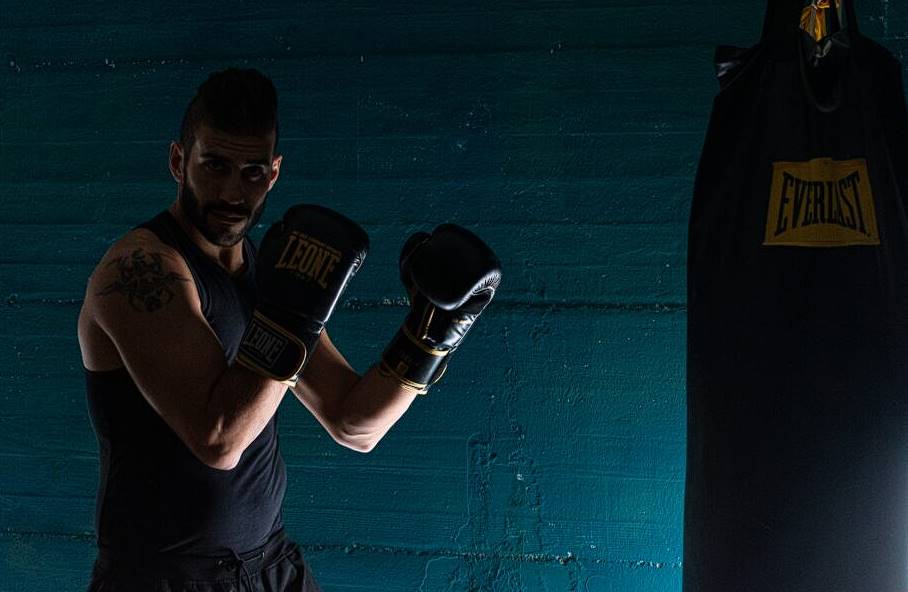
5. Mouthguards with red colouring are not allowed
Permit me to see if I can shed some light on this: If there is red present, the referees won't be able to see any blood.
6. You can’t wear clothes that are all one colour
Have you ever noticed that most boxing trunks feature a waistband that is a contrasting colour? Because of this, a low blow will be more easily identifiable. However, there is no clear delineation for a referee to call a low blow or for the judges to mark a clean and legal shot if a boxer is wearing black trunks with a black tank top. Therefore, it makes it difficult for the judges to score the fight.
Before the rule was changed in 2014, it was common to see coaches creating an impromptu waistline for their boxers by wrapping duct tape around their boxers' trunks. Such behaviour is not permitted any more. See the next rule.
7. No tape is allowed on gear or clothing
It is one of the new rules implemented in 2014, and the logic behind it is to ensure that boxers have access to equipment and clothing that is of sufficient quality and can fulfil its intended purpose. Before this year, you could get every kind of tape designed to remedy every problem on the market.
Combined shoe soles held together by tape. The tape was applied to the laces of the shoes (so that they wouldn't fly around or come undone), and the tape was applied to the gloves. The back of a jersey is taped up to accommodate a fighter with a smaller frame better.
At the lowest levels of competition, you'll see some tape infractions officials ignore when it's supporting safety. It is because getting rid of tape means upgrading equipment, and since boxing serves so many young people who don't have the means to acquire new equipment, boxing serves as an outlet for so many young people.
So, for example, the laces may be taped to the gear to prevent someone from accidentally poking themselves in the eye with their headgear laces. The same can be said about old, worn-out glove laces.
Yet, given that it is now a part of the official rules, this may no longer be the case. These gentlemen down below? It is forbidden to enter the ring.
8. You must weigh in clean-shaven
As a result, the Ewok that was previously mentioned cannot participate. Catbeards and dog beards are likewise not permitted in this establishment. Get these jokers out of here as soon as possible.
UPDATE: The requirement that Master athletes (those who are 35 or older) be clean-shaven before weigh-ins have been altered such that moustaches and neatly trimmed beards of less than two (2) inches in length are now permitted. Formerly, this rule only applied to athletes in the Master age group.
10 Most Common Mistakes Amateur Boxers Commit
1. Going Too Hard And Too Fast
Amateur boxers frequently make the error of going too hard or too fast on their opponents. It is by far the most common mistake they make. Even though it is exhilarating and gratifying to land some solid blows early on in the fight, doing so can drain your energy and make it difficult for you to continue competing in the latter rounds of the game.
It will also reduce the likelihood of you winning the battle because your opponent will still have enough energy to land accurate punches despite your use of this strategy. Hence, to avoid problems during the fights, you must practice keeping a consistent pace for the full three minutes and three rounds.
You will need all your energy for the later rounds of the competition. Strengthening your endurance is another strategy that can assist you in playing all 36 minutes of a game. For example, instead of delivering a hard and fast punching strike right at the beginning of the game, you need to train yourself to exhaust your opponent's energy by dodging their attacks and using your body motions.
2. Breaking Stance
In their training and bouts, many amateur boxers make the mistake of breaking their stance, which is another typical mistake. Boxers need help to land accurate punches under these conditions. It is vital to work on one's posture to improve. It will assist you in preventing you from providing your opponent with this leverage when you are competing.
Your torso should be directed slightly toward your opponent, your knees should be bent ever-so-slightly, and your feet should be shoulder-width apart when you take your stance, as recommended by the experts. In addition to that, you should position your left hand in front of your face, and you should position your right hand by your chin.
If you change your stance, your opponent can more easily hit you in the face or launch a punching blow against you. So, you must closely watch your stance whenever you are practising or competing.
3. Dropping Hands
Boxing novices often make the mistake of letting go of their hands after throwing a punch, which can harm their performance. Your performance and speed may suffer if you do the same thing. And if they throw a counter at you simultaneously, it will certainly be to your opponent's advantage.
If you want to keep boxing for a long time, you must ensure you don't make this mistake. You must bring your hands back to their normal position in front of your face to maintain your level of safety. If you did things this way, you would prevent your opponent from attacking you. Following each punch you throw, raising your hands in front of your face will allow you to shield and perform a counterattack on your opponent. It will give you an advantage in the fight.
4. Losing Breath Control
As an amateur boxer, one of the most common mistakes you can make is holding your breath while throwing punches. Unfortunately, it is one of the fundamental mistakes. If you hold your breath when you punch, your blows will have less impact. So, during this class, you should never hold your breath.
While you are throwing punches, you should exhale as you do so. It will assist you in developing a more powerful punching technique. You will exhaust out far more rapidly if you hold your breath while punching opponents if you do. It would help to have adequate control over your breathing and know when to exhale and hold your breath.
Boxing instructors will tell you to take slow, deep breaths while sparring because it will help you remain cool and fresh. However, to get an advantage over your opponents, you must also coordinate your breathing with your actions. Thus, maintain control of your breathing throughout the boxing match.
5. Drinking Water Too Much
While boxing and doing their workouts, most beginning boxers make the serious yet fundamental error of consuming excessive water, which can be detrimental to their performance. Even though maintaining proper hydration is one of the essential aspects of this sport, consuming excessive water might lead to issues.
In extreme circumstances, drinking excessive water might cause you to get bloated; in extreme circumstances, it can cause stomach aches and abdominal pains. Therefore, during your boxing training and sessions, you should drink a few water sips to prevent these potential complications.
After the training or sparring sessions, you are free to drink as much water as you like to help your body return to its normal state of hydration.
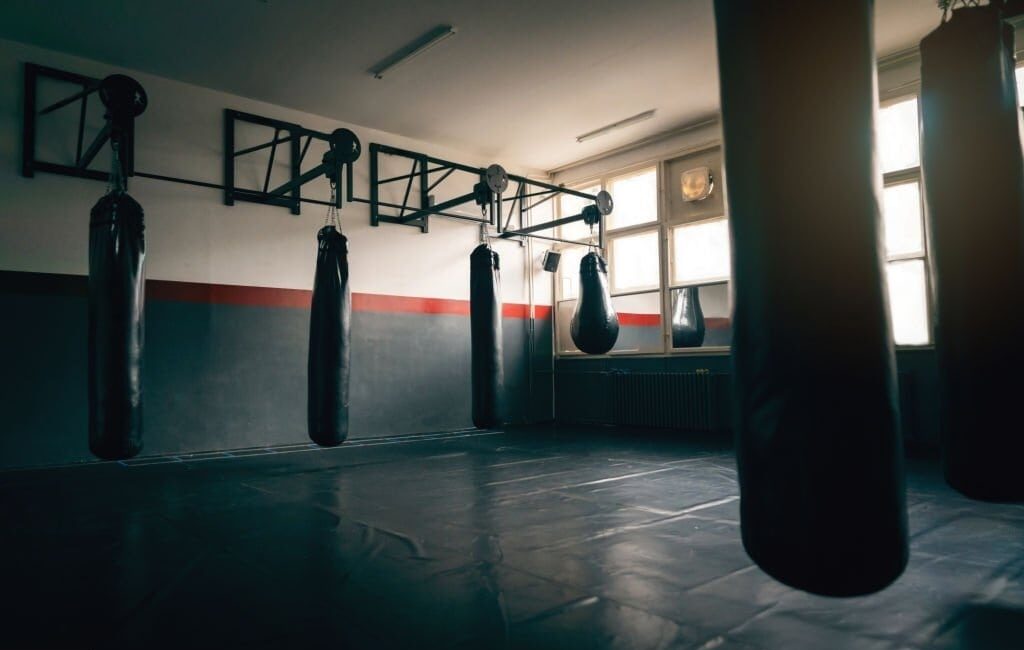
6. Hesitation In Throwing Punches
Many amateur boxers need to change their habit of pausing when throwing blows. When you hesitate to punch your opponent, you allow them to acquire an advantage and score a solid hit on you.
Hence, you must avoid hesitating at any cost while competing in the match. There is also someone there to hit you, who is your opponent. Why don't you hit him first if you don't want to get punched in the face? It is the factor that determines who comes out on top in the fight and who comes out on the losing end every time.
You need to practice and perfect a variety of actions based on diverse scenarios to achieve the self-assurance necessary to hit your opponent in the appropriate manner. In addition, to maintain your advantage over your opponent and prevent them from gaining an advantage, you must be ready to act fast in the ring.
To develop your whole game, you must defend against attacks and improve your offence.
7. Excessive Headhunting
Many newcomers need to pay more attention to headhunting. When you go for head hitting, you are going for a hard punch or a knockout strike that can cause the referee to stop the game earlier than normal.
As an amateur boxer, a wide variety of other aspects of your game require your attention. Unfortunately, you may be overlooking them. When fighting professionally, combatants follow a certain strategy to attack their opponent using a variety of various combinations of moves.
It would help if you took advantage of your time to force your opponent to lower their guard. Then, when your adversary relaxes their defence, you should seize the opportunity to employ your punching weapon to swing the game in your favour.
It would help if you watched films of legendary boxers to comprehend this concept fully and put it into practice correctly. However, if you look at this, you will learn how they can have an advantage over their opponents while they are playing the match.
8. Throwing Arm Punches
When they throw a punch, most novice boxers move their hands and leave the rest of their bodies completely still. It is something that has been seen. However, there is more to boxing than just using one's hands, as stated in several boxing manuals and rules. In addition to this, the punching motion utilises the entirety of the body.
Boxing instructors will tell you that your legs, hips, and waist are the primary contributors to the force of your punch. Bending your knees, twisting your chest to face the opponent, and moving your energy from your waist to your shoulder to be transferred to your fist are all necessary components of the perfect punch. It is possible to significantly influence your opponent if you punch them in this manner.
Only move in this direction if you are not utilising the rest of your body and instead relying solely on your hands. If you want to throw a punch that lands, you should ask your trainer to show you how to get into the appropriate posture.
9. Excessive Training
Boxers frequently overtrain another fundamental error that must be avoided. They do not rest for the adequate length of time their body requires. Because of this, their muscles develop at a faster rate than their bodies can support. It also risks them suffering catastrophic injuries while practising or sparring.
The human body is built to require rest after being exerted due to its design. If you do not allow your muscles to rest, they will not be able to perform at the level of intensity they can. It could be tempting to get yourself ready for the next events, but putting too much stress on your body will not help.
If you overtrain, you risk aggravating existing ailments, which could make it impossible for you to participate in the contests of your choice. Instead of overworking your body in preparation for the fights, you should focus on building a more moderate training regimen to improve your skills and enhance the strength of your muscles.
10. Losing Focus
It is an adage that maintaining concentration will keep you on the path to success. If you allow yourself to lose concentration, you are allowing your rival to succeed. On the other hand, it has been observed that most beginners, when they attempt to land heavy punches, end up losing sight and concentration on their opponent.
If you are doing the same thing, your opponents can use that time to their advantage and hit you with devious counters that you may not see coming if you are also doing the same thing. Therefore, it is necessary to maintain concentration and keep an eye line while delivering punches to protect oneself from assaults from the opponent that was not seen.
It is not a sign of failure to make errors in the beginning. On the contrary, it is always beneficial to learn from other players to enhance your game. First, find out if you are making similar mistakes throughout your training or in your battles. Then, please stay away from them and work on improving your talents. On this matter, you need to inquire about the adjustment from your trainer.
Conclusion
When one first begins to learn art, one will inevitably make mistakes. For example, one of the more difficult forms of martial art, boxing, is known for its extensive repertoire of intricate moves and strategies. Hence, when you first begin, it is inevitable that you will make some errors.
If you are aware of the pitfalls in advance, you can avoid them through practice and competition, improving your chances of success. In addition, by understanding these typical errors, you can improve your performance in the sport and move ahead more quickly.
Frequenly Asked Questions
How can I find a good amateur boxing gym or coach?
Finding a reputable boxing gym or coach is essential for your development as an amateur boxer. Consider the following steps to find a good fit:
-
- Research local gyms: Look for boxing gyms in your area and read online reviews or testimonials from current or past members. Consider factors such as the gym's reputation, coaching staff, facilities, and training environment.
- Visit gyms and observe sessions: Visit potential gyms during training hours to observe the coaching style, interaction between coaches and boxers, and the overall atmosphere. This will help you get a feel for the gym's training culture.
- Talk to coaches and boxers: Engage in conversations with coaches and current boxers at the gym to ask questions about their experience, coaching philosophy, and the training programs they offer.
- Trial sessions: Many gyms offer trial sessions or introductory packages. Take advantage of these opportunities to experience the training firsthand and assess if the gym and coaching style align with your goals and preferences.
- Seek recommendations: Ask fellow boxers or individuals involved in the boxing community for recommendations on reputable coaches or gyms in your area.
How can I prevent injuries in amateur boxing?
Injury prevention is crucial in any sport, including amateur boxing. Follow these tips to reduce the risk of injuries:
-
- Warm-up: Prioritize a thorough warm-up before every training session or bout. Include dynamic stretches, light cardiovascular exercises, and mobility drills to prepare your muscles and joints.
- Use proper equipment: Always use high-quality boxing gloves, hand wraps, mouthguards, and headgear to protect yourself during training and sparring sessions.
- Focus on technique: Proper technique not only improves your performance but also reduces the risk of injuries. Pay attention to correct form and avoid reckless or improper punching techniques.
- Gradual progression: Gradually increase the intensity and duration of your training sessions to allow your body to adapt and minimize the risk of overuse injuries.
- Listen to your body: If you experience pain, discomfort, or signs of injury, listen to your body and seek appropriate medical attention. Rest and recover when needed to prevent exacerbating an injury.
How often should I train for amateur boxing?
The frequency of your training sessions will depend on various factors such as your skill level, goals, and available time. However, it is generally recommended to train at least 3-4 times per week to make consistent progress. This frequency allows for an adequate balance between skill development, conditioning, and recovery. Be sure to include a mix of technique training, strength and conditioning exercises, sparring, and rest days in your training schedule.
How can I improve my endurance for boxing matches?
Building endurance is crucial for lasting through the rounds of a boxing match. Follow these tips to improve your endurance:
-
- Cardiovascular training: Engage in activities like running, cycling, swimming, or jumping rope to improve your cardiovascular fitness and stamina.
- High-intensity interval training (HIIT): Incorporate HIIT workouts, which involve short bursts of intense exercises followed by active recovery periods, to simulate the demands of a boxing match.
- Sparring sessions: Regularly spar with partners to practice boxing under fatigue and build mental and physical endurance.
- Proper recovery and rest: Allow your body enough time to recover between training sessions to prevent overtraining and optimize your endurance gains.
How can I improve my footwork in amateur boxing?
Improving footwork in amateur boxing is essential for maintaining balance, agility, and effective movement in the ring. Here are a few tips:
-
- Practice shadow boxing: Focus on footwork drills, moving in different directions, and pivoting to enhance your coordination and balance.
- Incorporate ladder drills: Use an agility ladder to practice quick foot movements, side steps, and shuffles, improving your footwork speed.
- Jump rope exercises: Jumping rope helps develop foot coordination, endurance, and rhythm, translating into better footwork inside the ring.
- Partner drills: Engage in partner drills focusing on mirroring your partner's movements, practising defensive footwork and evasive maneuvers.
